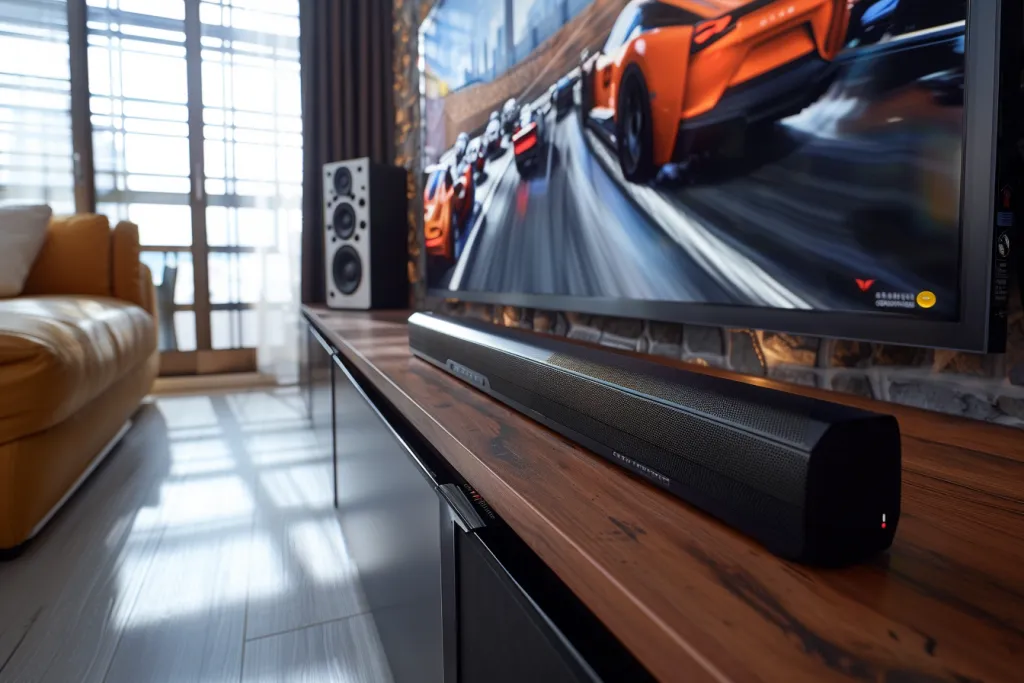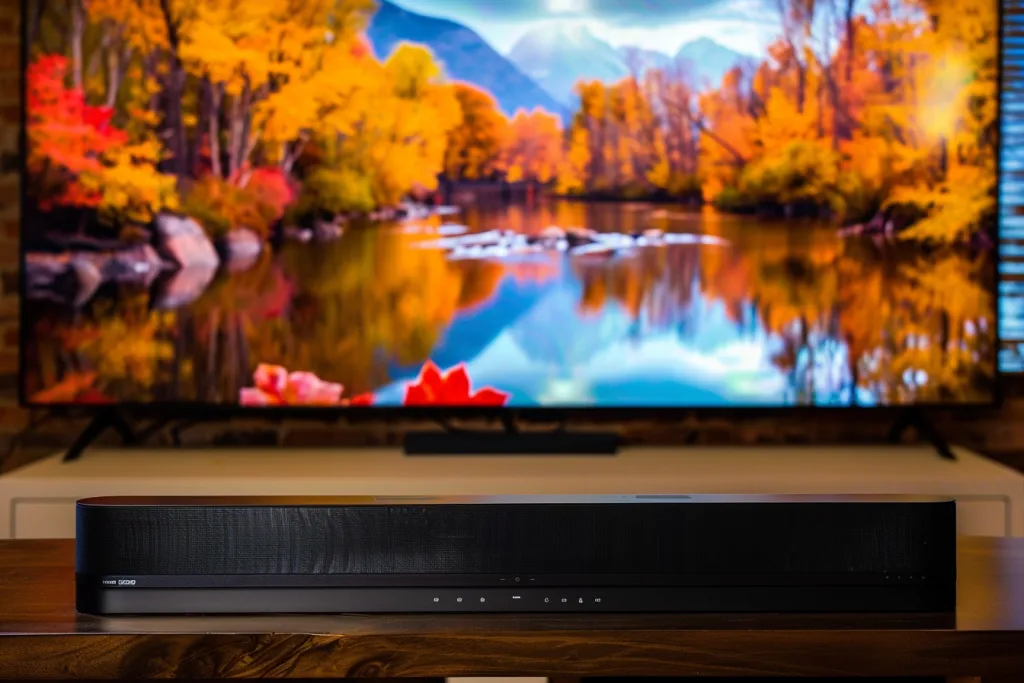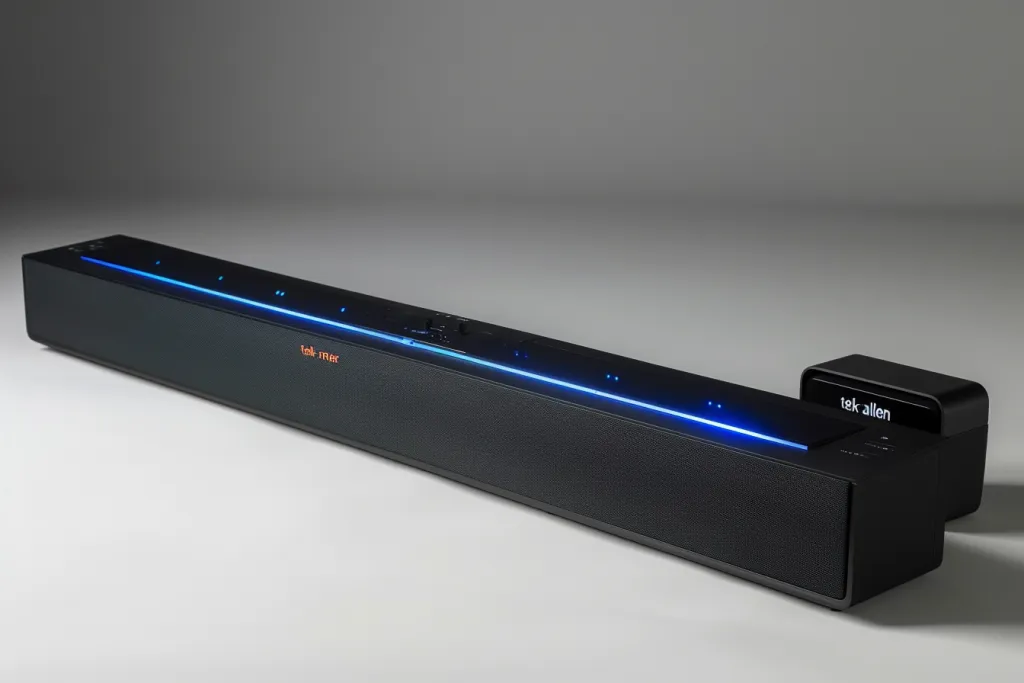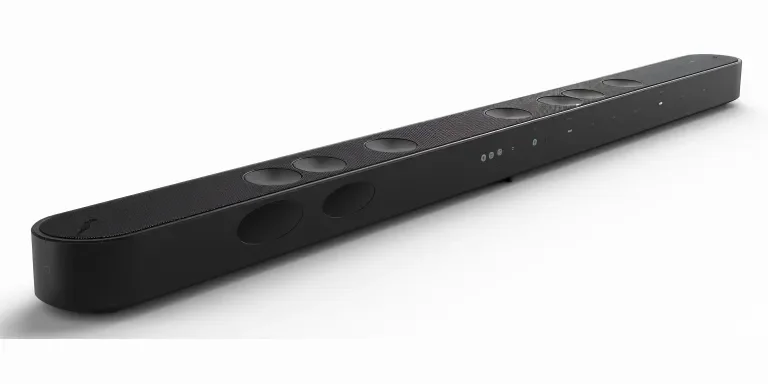In the ever-evolving landscape of home entertainment, sound bars have emerged as a game-changer for audiophiles and casual listeners alike. Compact, sleek, and powerful, these devices offer an immersive audio experience without the clutter of traditional surround sound systems. This article will guide you through everything you need to know about sound bars, from how they work to tips on choosing and using them effectively.
Table of Contents:
1. What is a sound bar?
2. How does a sound bar work?
3. Benefits and drawbacks of sound bars
4. How to choose a sound bar
5. How to use a sound bar
What is a sound bar?

A sound bar is a type of speaker system designed to enhance the audio output from your television or other multimedia devices. Unlike traditional home theater systems that require multiple speakers placed around a room, a sound bar is a single, elongated unit that houses multiple speakers within one sleek enclosure. This design not only saves space but also simplifies the setup and installation process, making it an attractive option for those looking to boost their audio experience without the hassle of a complex sound system.
Sound bars come in various shapes and sizes, catering to different needs and room sizes. Some are designed to sit directly under your TV, while others can be mounted on the wall for a more integrated look. Many modern sound bars also come equipped with wireless connectivity options, such as Bluetooth or Wi-Fi, allowing users to stream audio directly from their smartphones, tablets, or other devices.
The technology behind sound bars has advanced significantly over the years, with manufacturers incorporating features such as virtual surround sound, Dolby Atmos, and DTS:X support. These advancements enable sound bars to produce a more immersive audio experience, rivaling that of traditional surround sound systems but in a more user-friendly package.
How does a sound bar work?

At its core, a sound bar works by receiving audio signals from your TV or another source and then using its built-in speakers to project the sound. The internal speakers are strategically placed within the sound bar’s enclosure to produce a wide soundstage, giving the illusion of audio coming from different directions. This is achieved through a combination of speaker placement, signal processing, and, in some cases, additional satellite speakers or subwoofers.
Many sound bars utilize a technology called “virtual surround sound” to simulate the experience of a multi-speaker surround sound system. By analyzing the incoming audio signal and applying complex digital signal processing, sound bars can create the effect of sound emanating from various directions. This process involves delays, frequency adjustments, and other audio effects to trick the brain into perceiving a more expansive sound field.
For those seeking an even more immersive audio experience, some sound bars support advanced audio formats like Dolby Atmos and DTS:X. These formats use object-based audio to place sounds in a three-dimensional space, allowing for overhead sounds and more precise placement of audio cues. Sound bars that support these formats often have additional speakers that fire upwards, reflecting sound off the ceiling to create the sensation of height.
Benefits and drawbacks of sound bars

Sound bars offer several advantages over traditional home theater systems. Their compact size and all-in-one design make them ideal for small living spaces or for those who prefer a minimalist setup. Installation is typically straightforward, requiring only a few cables to connect the sound bar to your TV or media player. Additionally, the wireless connectivity options available on many models make it easy to stream music or other audio content directly from your devices.
However, sound bars are not without their limitations. While they can significantly improve your TV’s audio quality and provide a more immersive listening experience, they may not fully replicate the surround sound effect of a multi-speaker system. The virtual surround sound technology used in sound bars can be impressive, but it may not satisfy the most discerning audiophiles or those seeking a true home theater experience.
Another consideration is the range of quality and features available across different models and price points. Lower-priced sound bars might offer a noticeable improvement over your TV’s built-in speakers but lack the advanced features or audio fidelity of higher-end models. It’s essential to carefully consider your needs and budget when selecting a sound bar.
How to choose a sound bar

Choosing the right sound bar involves considering several factors, including your room size, audio preferences, and connectivity needs. For smaller rooms, a simple, compact sound bar without a separate subwoofer might suffice. However, for larger spaces or if you desire deeper bass, look for models that come with a wireless subwoofer or have the option to add one later.
Audio format support is another critical consideration. If you’re interested in experiencing immersive audio formats like Dolby Atmos or DTS:X, ensure the sound bar you choose supports these technologies. Additionally, consider the sound bar’s connectivity options. Many models offer Bluetooth or Wi-Fi streaming, HDMI inputs for connecting multiple devices, and even voice control capabilities through compatibility with smart assistants.
Lastly, don’t overlook the importance of the sound bar’s design and how it will fit with your TV and living space. Measure the area where you plan to place the sound bar to ensure a good fit, and consider whether you’ll mount it on the wall or place it on a stand.
How to use a sound bar

Setting up and using a sound bar is generally straightforward, but there are a few tips to ensure you get the best audio experience. First, connect your sound bar to your TV using the most appropriate method. HDMI ARC (Audio Return Channel) is often the best choice if available, as it allows for higher quality audio transmission and lets you control the sound bar’s volume with your TV’s remote.
Once connected, position your sound bar either directly below your TV or mount it on the wall. If your sound bar comes with a subwoofer, place it on the floor near the sound bar for optimal bass performance. After setting up, take some time to adjust the audio settings according to your preferences. Many sound bars offer different sound modes or EQ settings to enhance dialogue clarity, music playback, or create a more immersive movie-watching experience.
Conclusion: Sound bars represent a versatile and user-friendly solution for enhancing your home audio experience. Whether you’re looking to improve your TV’s sound quality or create a more immersive listening environment, there’s a sound bar out there to meet your needs. By understanding how they work, their benefits and limitations, and how to choose and use them effectively, you can select the perfect sound bar to complement your home entertainment setup.




